This article relies largely or entirely on a single source .(March 2019) |
Pellandini Cars was a manufacturer of kit cars during the early 1970s that was located in South Australia.
This article relies largely or entirely on a single source .(March 2019) |
Pellandini Cars was a manufacturer of kit cars during the early 1970s that was located in South Australia.
Englishman Peter Pellandine founded Pellandini Cars Ltd in 1970 at Cherry Gardens, South Australia. He first produced a curvy, gull-wing coupe that used a mid-mounted BMC Mini drivetrain of 1100 or 1275cc capacity. Alloy wheels were 10-inch at the front and 12 inches at the rear. The body was made of GRP with an integral GRP chassis. The suspension points were individually mounted directly to the GRP chassis as were the engine mounts. The seats were part of the chassis and not adjustable: instead the pedals moved. Even the steering rack was bolted to the GRP bulkhead. The car weighed 480kg and did 0 to 100 km in 5 secs. It had a one-piece nose section that hinged at the front which concealed the radiator and spare wheel.
Pellandine also offered a roadster version in 1974 but these proved less popular. In all, seven coupés were sold. Most of these cars still remain, some having been rebuilt after motor racing accidents.

Pellandine also embarked on a project to build a practical steam car with a contract from the South Australian Government. It used a double-acting two-cylinder 40hp engine mounted in the rear of a two-seater, with the condenser mounted on the rear deck like a racing wing. This steam car is now at the National Motor Museum at Birdwood South Australia.
Pellandini Cars wound up in 1978 before Pellandine returned to England, where he produced two further models both using a fibreglass monocoque chassis and mid-mounted engines.

The Lamborghini Diablo is a high-performance mid-engine sports car built by Italian automobile manufacturer Lamborghini between 1990 and 2001. It is the first production Lamborghini capable of attaining a top speed in excess of 320 kilometres per hour (200 mph). After the end of its production run in 2001, the Diablo was replaced by the Lamborghini Murciélago. The name Diablo means "devil" in Spanish.

Allard Motor Company Limited was a London-based low-volume car manufacturer founded in 1945 by Sydney Allard in small premises in Clapham, south-west London. Car manufacture almost ceased within a decade. It produced approximately 1900 cars before it became insolvent and ceased trading in 1958. Before the war, Allard supplied some replicas of a Bugatti-tailed special of his own design from Adlards Motors in Putney.
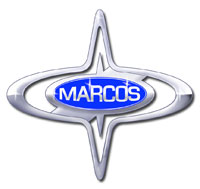
Marcos Engineering was a British sports car manufacturer. The name derives from the surnames of founders Jem Marsh and Frank Costin.
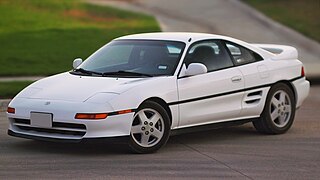
The Toyota MR2 is a line of two-seat, mid-engined, rear-wheel-drive sports cars manufactured in Japan and marketed globally by Toyota from 1984 until 2007 over three generations: W10 (1984–1989), W20 (1989–1999) and W30 (1999–2007). It is Japan's first rear mid-engined production car.
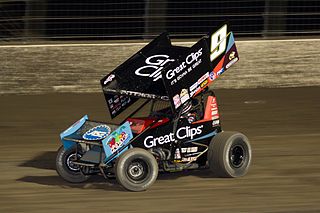
Sprint cars are high-powered open-wheel race cars, designed primarily for the purpose of running on short oval or circular dirt or paved tracks. Sprint car racing is popular primarily in the United States and Canada, as well as in Australia, New Zealand, and South Africa.

Berkeley Cars Ltd of Biggleswade, Bedfordshire, England produced economical sporting microcars with motorcycle-derived engines from 322 cc to 692 cc and front wheel drive between 1956 and 1960.

Ashley were manufacturers of body shells and chassis for specials from 1955 to 1962. They also offered a range of products for special builds: radiators, header tanks, lighting sets, steel tubing, sheet aluminium, various suspension parts, water pumps, tires, tubes and wheels. The company also made bonnets and hardtops for other mass-produced sports cars, including the Austin-Healey Sprite and Jaguar E-Type.
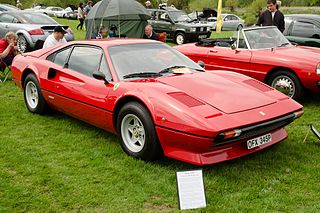
The Ferrari 308 GTB berlinetta and targa topped 308 GTS are V8 mid-engined, two-seater sports cars manufactured by the Italian company Ferrari from 1975 until 1985. The 308 replaced the Dino 246 GT and GTS in 1975 and was updated as the 328 GTB/GTS in 1985. The similar 208 GTB and GTS were equipped with a smaller, initially naturally aspirated and later turbocharged, two-litre engine, and were sold mainly in Italy.
Chaparral Cars was a pioneering American automobile racing team and race car developer that engineered, built, and raced cars from 1963 through 1970. Founded in 1962 by American Formula One racers Hap Sharp and Jim Hall, it was named after the roadrunner, a fast-running ground cuckoo also known as a chaparral bird.

The Alfa Romeo Alfasud Sprint is a boxer-engined coupé produced by the Italian manufacturer Alfa Romeo from 1976 to 1989, and based on the Alfa Romeo Alfasud. 116,552 units of the Alfasud Sprint and Sprint were built in total. The Sprint was sold in Europe, South Africa, Australia, and New Zealand.

The Maserati Birdcage 75th is a functional concept car designed and developed by a Pininfarina design team led by Lowie Vermeersch, including Jason Castriota and Giuseppe Randazzo under the direction of Ken Okuyama. It was first introduced at the 2005 Geneva Auto Show. It was named to honor the classic Maserati Birdcage race cars of the 1960s and Pininfarina's 75th anniversary. The Birdcage was the result of a collaboration between Maserati, Pininfarina and Motorola to showcase their technical expertise. The car was completed in just 2 months, following a fast pace design phase using 3D renderings.
Peter Pellandine was an influential car designer and manufacturer in the field of specials/kit cars and steam-powered vehicles in both the UK and Australia.
Pelland Engineering was a British engineering company that produced kit cars and made an attempt on the world land-speed record for steam cars.
Sylva Autokits is a kit car manufacturer based in Lincolnshire, England. Sylva was founded in 1981 by Jeremy Phillips and has developed and produced a number of small and lightweight sports cars. Sylva cars have won a number of 750 Motor Club Kit Car championships.

The McLaren M7A and its M7B, M7C and M7D variants were Formula One racing cars, built by McLaren and used in the world championship between 1968 and 1971. After two relatively unsuccessful years of Formula One competition, the M7A was used to score McLaren's first win at the 1968 Belgian Grand Prix.
Fiberfab was an American automotive manufacturer established in 1964. Starting with accessories and body parts, they progressed to making kit cars and fully assembled automobiles. They became one of the longest lasting kit car manufacturers.

The Land Rover series I, II, and III, or simply the Land-Rover are compact British off-road vehicles, produced by the Rover Company since 1948, and later by British Leyland. Though inspired by the World War II jeep, the Land Rover immediately distinguished itself from all other cars. From launch, it was the first mass-produced civilian four-wheel drive car with doors on it, and an available hard roof. Contrary to conventional car and truck chassis, it used a sturdier fully box-welded frame. Furthermore, due to post-war steel shortage, and aluminium surplus, Land Rovers received non-rusting aluminium alloy bodies, favouring their longevity. In 1992, Land Rover claimed that 70% of all the vehicles they had built were still in use.

Modified stock car racing, also known as modified racing and modified, is a type of auto racing that involves purpose-built cars simultaneously racing against each other on oval tracks. First established in the United States after World War II, this type of racing was early-on characterized by its participants' modification of passenger cars in pursuit of higher speeds, hence the name.
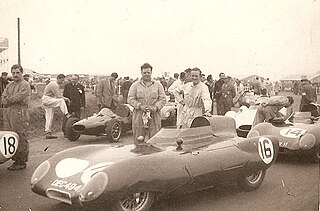
John Crosthwaite was an English race car designer and engineer, active in both the United Kingdom and the United States.

The Ferrari 365 P Berlinetta Speciale was a concept sports car designed and produced by Pininfarina and Ferrari in 1966. It featured a mid-engined layout of a donor racing car chassis and three-seat arrangement with a central driving position, as later popularised on McLaren F1. It was the first purpose-built, mid-engined, road-going Ferrari-branded car. Other similar Ferraris at that time were road-usable race cars like the 250 LM 'Stradale'.